Introducing a fierce man who developed a 'computer-controlled automatic cue' that allows even amateurs to play accurate shots with billiards.

Billiards is
Automatic pool stick vs. strangers --YouTube
There are various rules for billiards, but ...
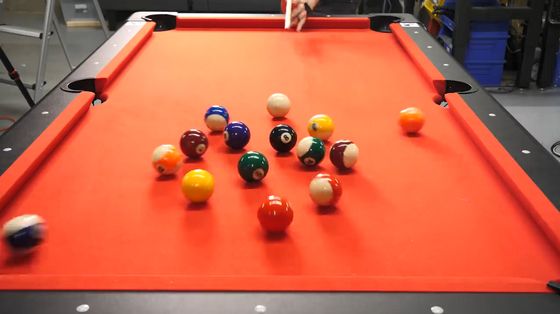
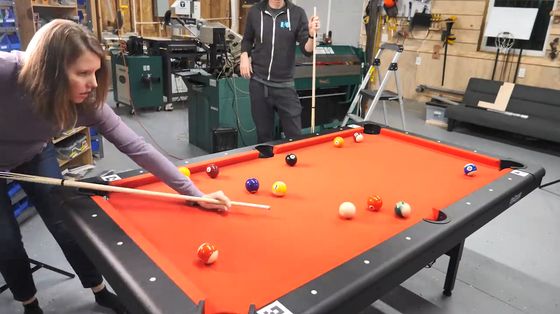
In both cases, the skill of 'deciding which ball to put in the pocket of the pool table, cuing the ball accurately and dropping the ball' is important.
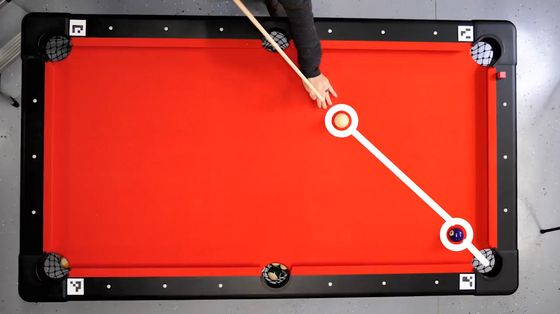
It takes some practice to improve, but ...
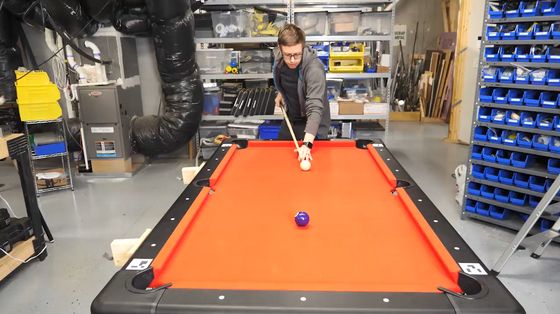
If the tip of the cue is a robot, it may be possible to move freely to deliver accurate shots and drop the targeted ball into the pocket.
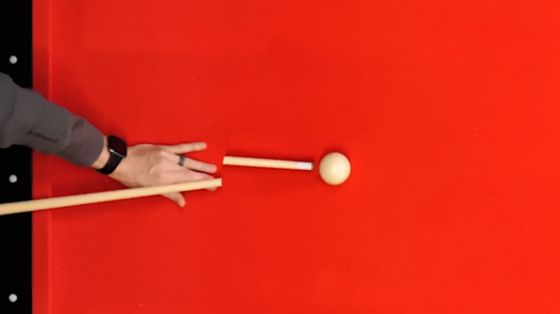
So Shane Wighton, who runs Stuff Made Here, embarked on a project to robotize billiard cues. Mr. Wyton devised a device that grasps the situation of the pool table from overhead with a camera and derives the best shot with an algorithm.
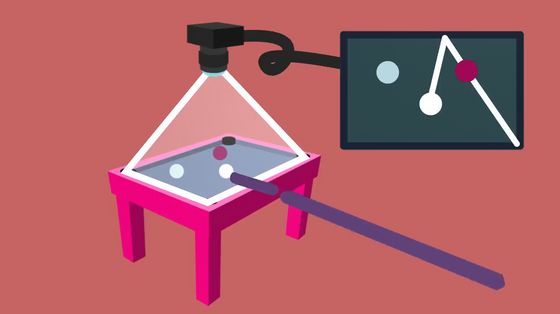
Since the movement of cueing the ball is 3D, not 2D, the tip of the cue must move in three dimensions.
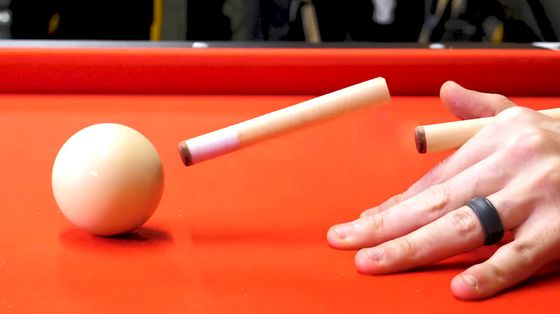
After developing a simple prototype, Mr. Wyton decided that a mechanism to move the tip of the cue with six telescopic rods would be suitable.
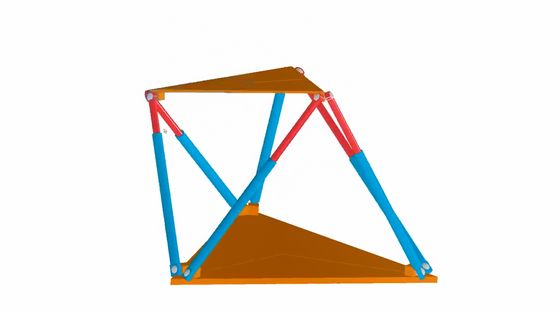
The rendering is like this.
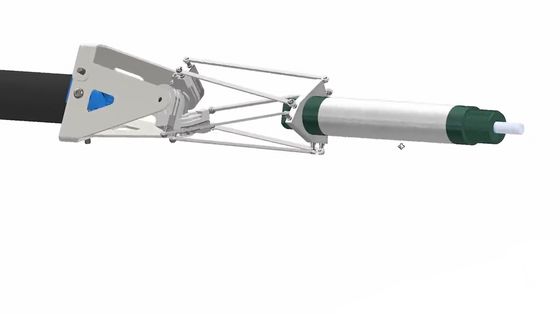
Mr. Wyton immediately molded the necessary parts ...
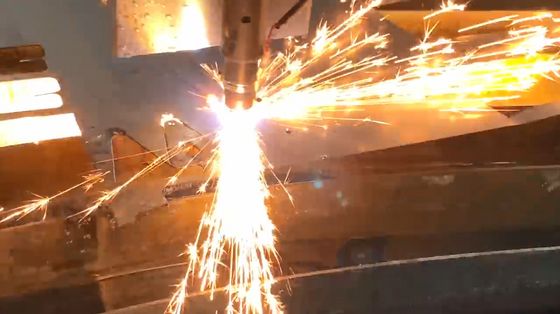
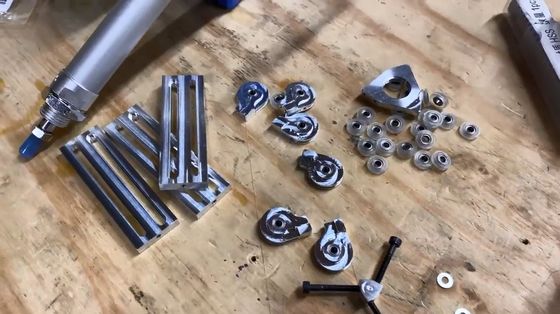
I will assemble it.
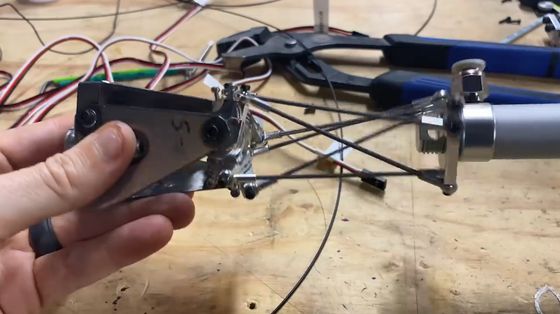
The mechanism at the base of the cue adjusts the expansion and contraction of the rod ...

The tip part can be moved freely.
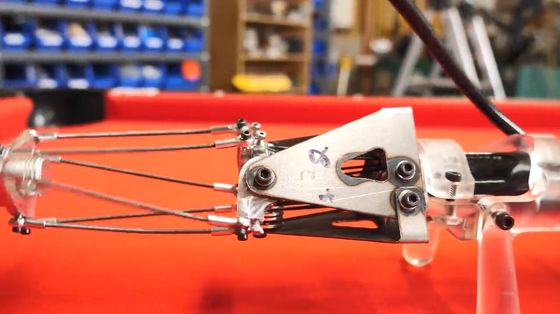
The movement of the cue is controlled by a microcontroller.
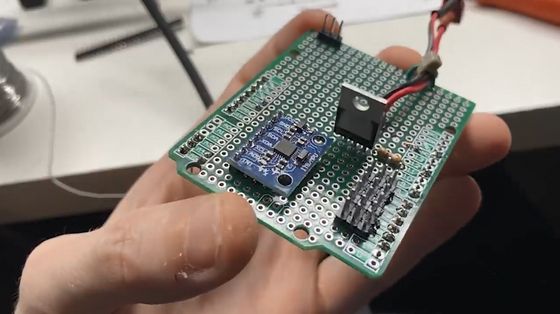
If you create a program that expands and contracts 6 rods and realizes proper cue movement ...
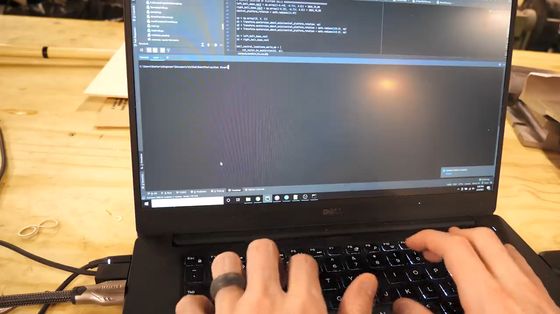
Free movement of the cue is possible.
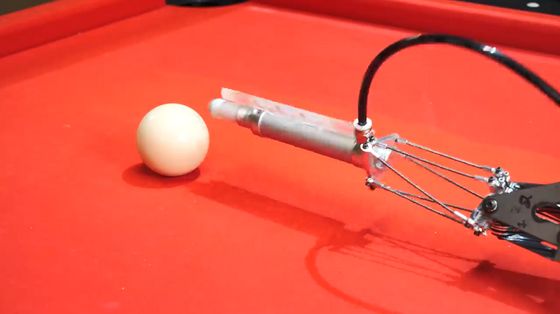
The cue moves with the compressed air of the air cylinder, but it does not always shoot at maximum output ...
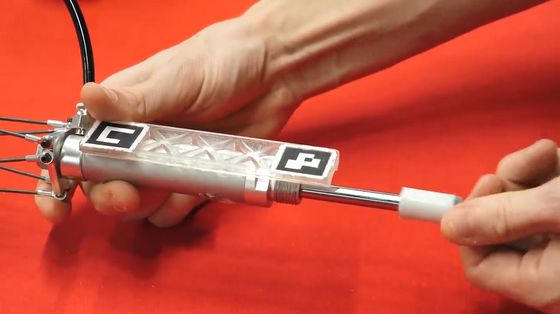
He said that he made a control mechanism using a microcomputer, a valve, and a car horn.

The system devised by Wyton installs a camera on the ceiling that captures the pool table to locate the cue and ball.
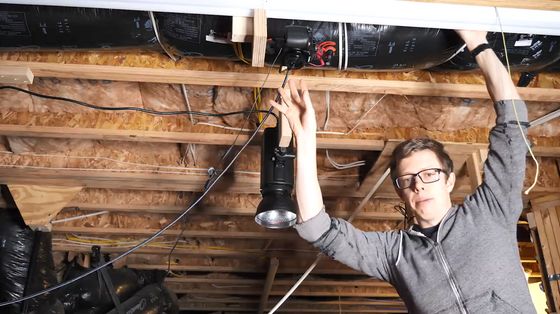
However, if the angle between the camera and the desk is different, there is a problem that the correct angle between the ball and the cue cannot be grasped. The 'optimal shot' calculated based on the wrong data will, of course, not work.
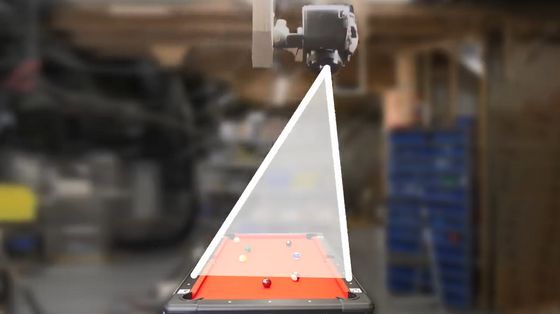
The secret to solving this problem is the special tags on the four corners of the pool table.
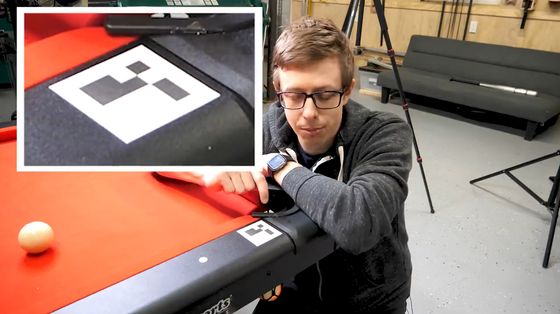
By correcting the position of the pool table based on this tag, it is possible to properly grasp the positions of the six pockets and the ball.
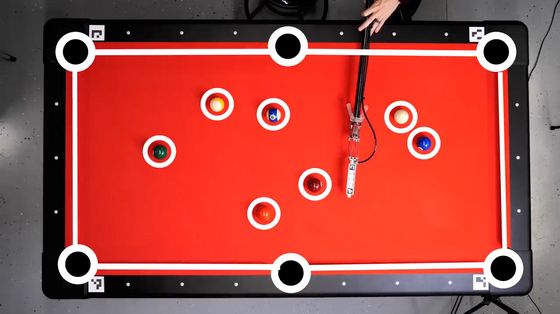
Also, by attaching a tag to the tip of the cue, the position of the cue can be recognized by the computer.
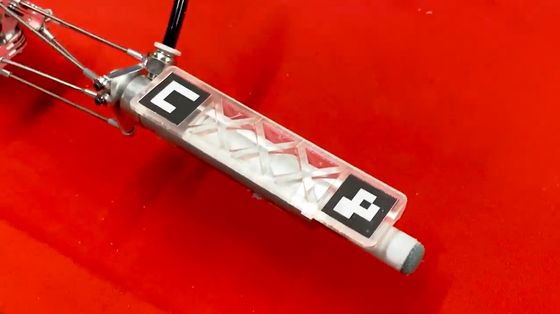
Since the camera can only recognize the 2D positional relationship, attach the plastic part that will be the pedestal under the cue ...
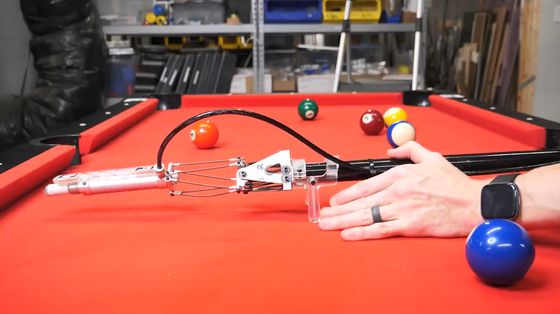
We have created a mechanism that allows the computer to detect the tilt of the queue.
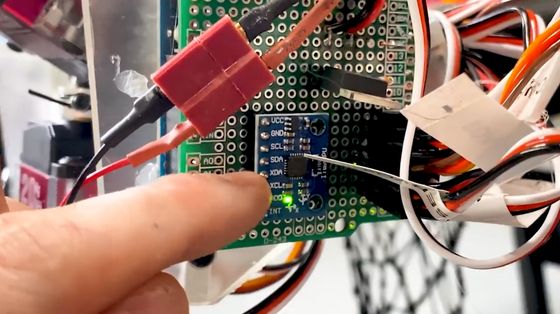
Wyton's system requires the cue to be held within a certain range in order to hit the target ball, but it is troublesome to hold the cue while comparing the calculated computer screen with the pool table. We decided to solve this problem by installing the projector on the ceiling and projecting a screen to assist the shot on the pool table.
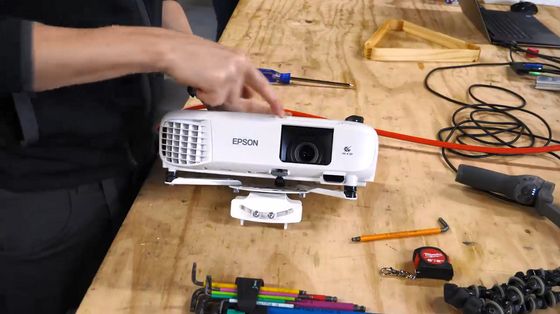
Succeeded in installing the projector despite the happening of accidentally disconnecting the electric and internet cables.

When I try the queue with full satisfaction ...
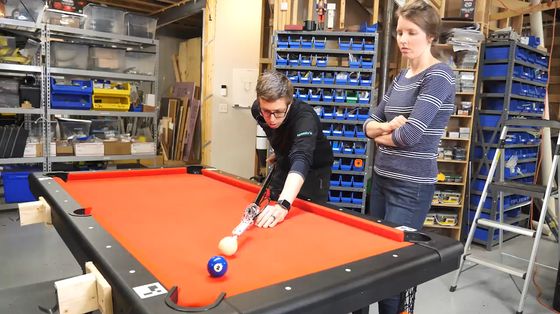
Even though it was a simple ball that even humans would not easily remove, the shot failed.
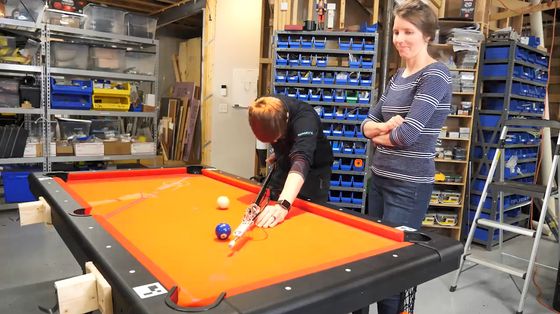
If the queue doesn't work correctly, something is wrong with the process you've made so far. There are many possibilities, such as camera placement, camera and pool table position correction, physics simulation, actuators that move the six rods, and mechanical mechanisms that have not been tested.
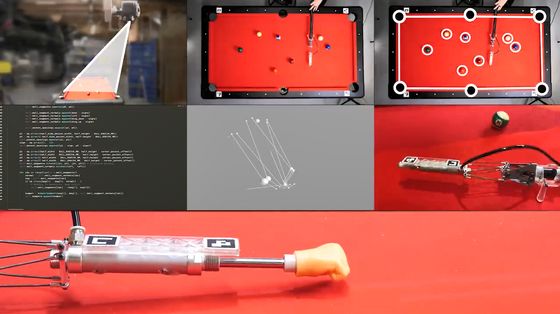
After fixing multiple mistakes such as pulleys and mathematical problems, Wyton finally discovered that there was a problem with the actuator's servomotor.

After fixing this, I was able to succeed in a shot that had previously failed.

Mr. Wyton also smiled unintentionally.
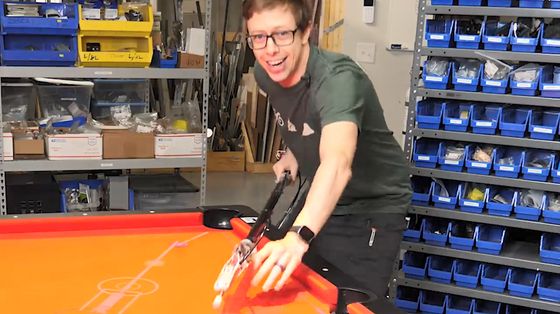
However, when I tried another shot with different angles and distances, this failed. There still seems to be a problem.
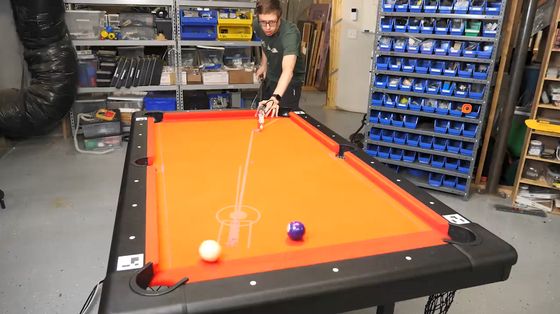
Wyton, who thought he had crushed all the possibilities by the time he reached the actuator problem, seemed depressed.
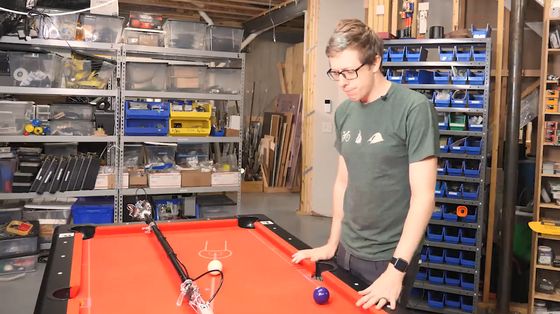
Still, after a thorough investigation, I found that the position of the ball recognized by the computer was slightly different from the actual position of the ball.
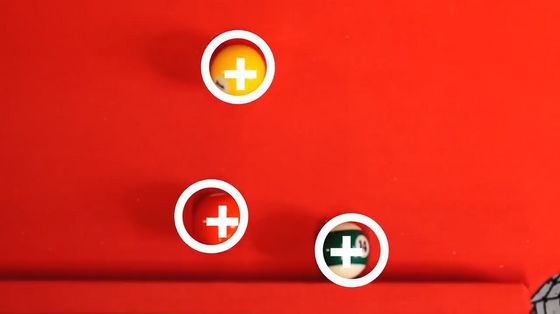
It was thought that this was due to the optical distortion caused by using the wide-angle camera, but Mr. Wyton said that he had already calibrated the camera.
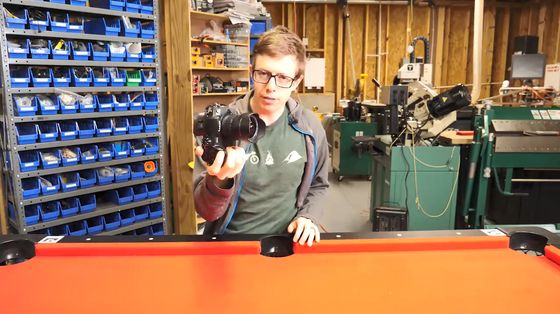
After a thorough investigation to find out what went wrong, it turned out that the problem wasn't just physical distortion.
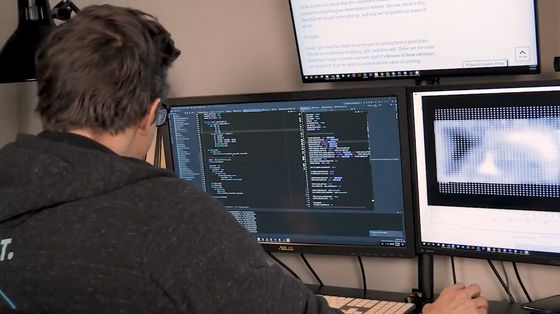
It seems that the correction result was off by 5 to 10 mm due to the accidental mixing of the test code during development.
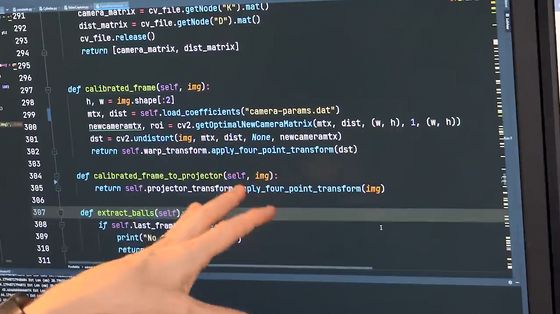
After fixing the problem, the cue is now able to deliver accurate shots.
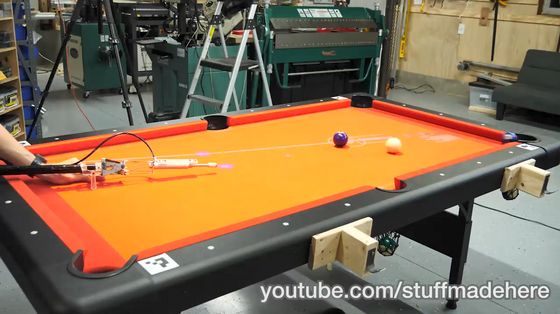
It seems fun just to shoot by yourself, but ...
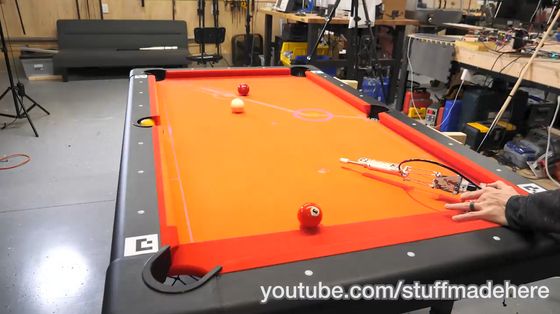
Mr. Wyton applied this to build a 'system that allows billiards using automatic cues via the Internet.' In fact, I decided to play billiards over the internet with my wife and people who are patrons of the YouTube channel.
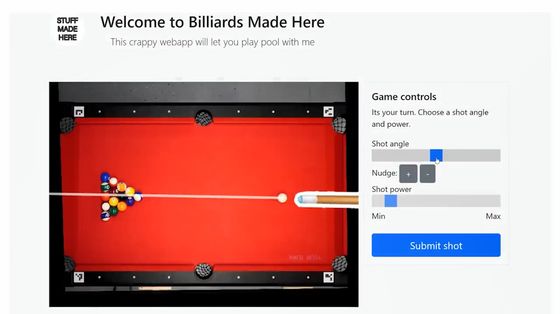
Opponents adjust the angle of the cue and the force of the shot, and click the button to shoot.
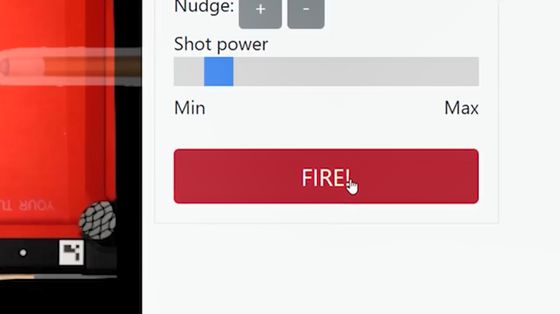
It is Mr. Wyton who actually holds the cue on the pool table, but you can play billiards remotely.
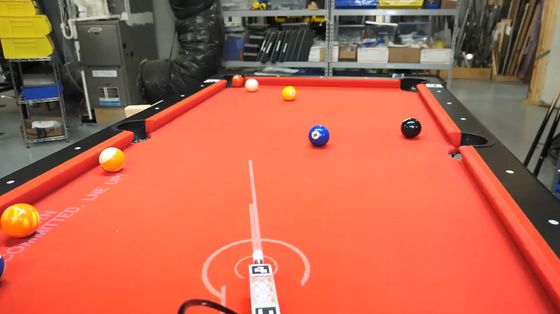
In fact, Mr. Wyton seems to have enjoyed playing remote billiards with a variety of people.
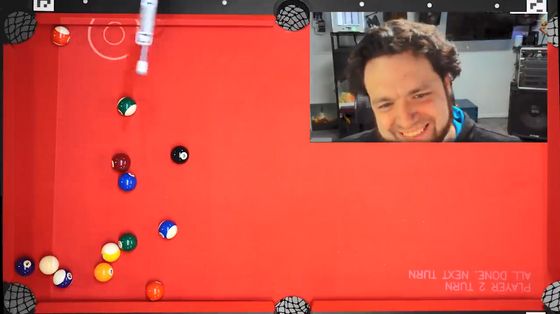
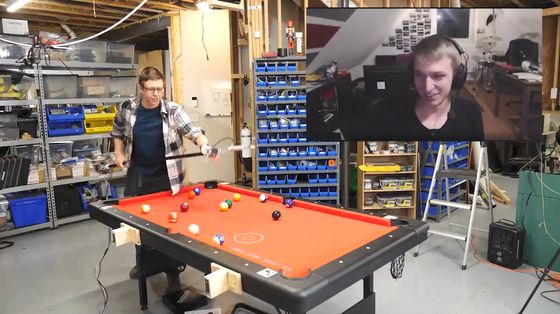
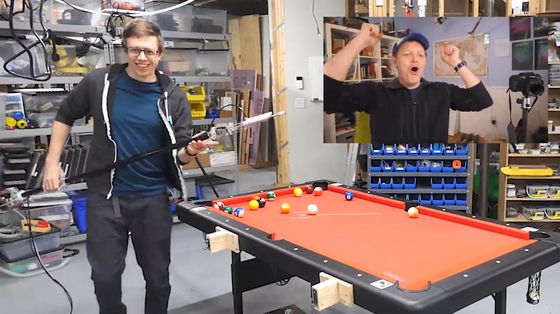
Related Posts:







